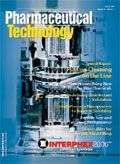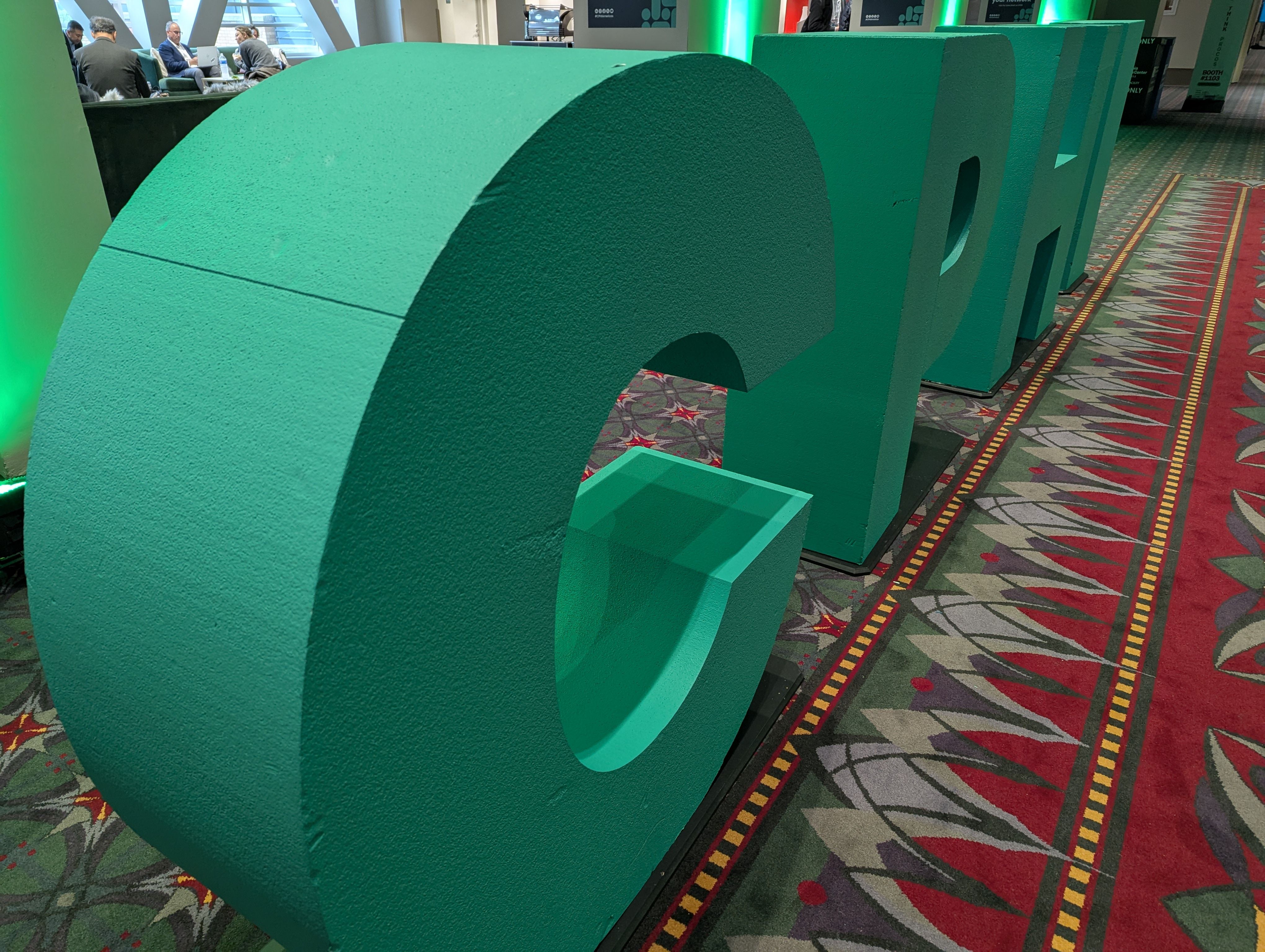News
Article
Pharmaceutical Technology
A Bio-Inspired Approach: Polymorph Farming on a Chip
Author(s):
Polymorph farming on a chip is a promising strategy for rapid polymorph discovery by transforming crystallization?crystal isolation?characterization into one time-efficient step.
Polymorph farming on a chip is a promising approach for rapid polymorph discovery. It transforms the crystallization–crystal isolation–characterization process into one time-efficient step. Crystals grown and harvested by this method may also be suitable for single-crystal X-ray diffraction and seeding in batch crystallization. Polymorph farming on a chip's versatility and feasibility were successfully demonstrated in the current study through templated crystallization of sulfathiazole on four separate thin films characterized immediately by Fourier transform infrared (FTIR) microscopy with an analytical time of about 10 seconds per crystal.

Self-assembly of molecules, atoms, or ions often is packed precisely in several different long-range orders. Each order in solid state is termed a "crystal polymorph." Because each polymorph is a unique material with its own physicochemical properties (1), the discovery and selection of a desired polymorph are essential in the food (2), explosives (3), optoelectronics (4), agricultural (5), and ceramics (6) industries and especially important in the pharmaceutical industry. Polymorph screening is highly important not only for evaluating the physicochemical aspects (7) of active pharmaceutical ingredients (APIs), but also for legal considerations (8). Polymorph farming on a chip allows for a thorough search for polymorphs on a global scale and at the same time minimizes the sample preparation time for crystallization, isolation, and characterization compared to other methods (9, 10).
Conventionally, several recrystallization methods can be used to grow polymorphs. One approach involves crystallization in various solvents or in a combination of solvents under a different rate of cooling of saturated solutions. Other methods entail evaporation of solvents, controlled addition of cosolvents, and a change of pH (11–14). These methods require extra time and labor because crystallization, crystal isolation, and sample preparation for different characterization techniques are deemed separate events. As is commonly known, characterization techniques such as powder X-ray diffraction and differential scanning calorimetry, require a relatively large amount of sample (4–10 mg) and long analytical time (30 min per sample). Although other nontraditional methods such as epitaxy matching (15), laser induction (16), size effect (17), and biomineralization (18) are known to induce uncommon polymorphs, these methods have been automated. Direct and routine implementation have removed the time-consuming drawback brought about by the three discrete activities of crystallization, crystal isolation, and sample preparation.
Two automated platforms that miniaturize conventional recrystallization methods with the use of an array of glass test tubes in aluminum blocks (9) and polymer heteronuclei in the 96-well polypropylene plate (10) were reported recently. With the use of in situ optical and Raman microscopy, these two methods have apparently have removed the time-consuming crystal isolation–characterization step in the chain of events of crystallization–crystal isolation–characterization. The design of these two enabling platforms, however, does not allow for high-resolution crystal-lattice imaging or for direct measurement of the mechanical and electrical properties of polymorphs by electron microscopy, nanoindenter, atomic force microscopy, thermal microanalysis, and dielectric analysis. The lengthy preparation of combinatorial conditions of different solvents and polymer heteronuclei also has prolonged the crystallization process. A new strategy that enables a universal fabrication-step dedicated only to the preparation of combinatorial conditions and allows for a more general platform for other kinds of physicochemical analysis can effectively shorten the time-consuming activities in polymorph screening.
Inspired by the microarrays in drug discovery (19) and built on the ideas of templated crystallization, (10, 15, 20–24), the strategy is to grow crystal polymorphs on thin-film templates of block copolymer, metal, and ceramics. Polymers, metals, and ceramics can be deposited on silicon wafers by spin casting and thermal evaporation.
Materials and methods
Solutions and samples preparation. Polystyrene-polybutadiene-polystyrene (PS-PB-PS) (molecular weight of 140,000 g/mol, 30% by weight styrene, and density of 0.965 g/m3) and polystyrene-poly(ethylene-ran-butylene)-polystyrene (PS-PEB-PS) (molecular weight of 118,000 g/mol, 28% weight by styrene, and density of 0.91g/m3) were obtained from Sigma-Aldrich (St. Louis, MO). PS-PB-PS templates and PS-PEB-PS templates were prepared on polished silicon wafers by spin casting (2000 rpm) from 1% weight-per-volume toluene solutions. Gold templates with obtained by thermal evaporation of 1300 Å of gold on polished silicon wafers under 10–6 torr. An unsaturated aqueous solution of sulfathiazole was prepared by warming 0.0432 g of sulfathiazole (Form III, Fluka, Buchs, Switzerland) in 17 mL of water at 90 °C.
Templated crystallization. Sulfathiazole, a well-characterized pharmaceutical compound (25, 26) (see Figure 1a), was chosen to test the polymorph-farming concept. One to two drops of the 90 °C unsaturated aqueous solution of sulfathiazole were separately introduced on the thin films of PS-PB-PS (see Figure 1b), PS-PEB-PS (see Figure 1c), gold, silicon and, mica thin-film templates at room temperature. Different sulfathiazole polymorphic crystals were grown under synergetic effects of film surface, a temperature drop from 90 to 25 °C, and water evaporation on thin-film templates as shown in Figure 2. Crystals grown on each template were then examined by FTIR microscopy.

Figure 1
Infrared (IR) microscopy. IR spectra were collected using either an FTIR microscope or by attenuated total reflectance with a FTIR microscope system (AutoImage, Perkin Elmer, Shelton, CT). Typical acquisition parameters were 64 scans, a 4-cm–1 resolution and a beam size of 10 μm with an acquisition time of only a few seconds.

Figure 2
Results
The optical images indicated that the sulfathiazole crystals, Form I (needle), Form II (cuboid), Form III (truncated hexagon), and Form IV (plate-like hexagon) were formed on gold (see Figure 3), mica (see Figure 4), PS-PEB-PS and PS-PB-PS (see Figure 5), and silicon (see Figure 6) thin-film templates, respectively. IR characteristic bands (26) 3354, 1406, 1500 and 937 cm–1 for Forms I, II, III, and IV were found as 3350, 1337, 1496, and 938 cm–1 in Figures 3–6, respectively. A characteristic IR triplet band (26) at 940 cm–1 was also observed for Form III. Therefore, the experimental results suggest that a desired polymorph can be incubated through a particular template.

Figure 3
Discussion
The 90 °C unsaturated aqueous sulfathiazole solution with a concentration of approximately 254 mg/100 mL (0.0432 g of Form III sulfathiazole in 17 mL of water) was used to ensure the absolute dissolution of sulfathiazole in water in the very beginning because the solubility of 254 mg/100 mL of Form III sulfathiazole usually occurs at about 55 °C (27). As the 90 °C unsaturated aqueous- sulfathiazole solution droplet was introduced on a particular film surface at room temperature, several interrelated mechanisms were made possible. The hydrophilicity or hydrophobicity of the film surface could affect the aqueous droplet size, shape, contact area, and surface area (see Figure 2). The resultant interfacial area between the aqueous sulfathiazole solution and the film then could determine the number of nucleation sites for heterogeneous nucleation. On the other hand, if the homogeneous nucleation were the main driving force, the resultant aqueous droplet size, shape, contact area, and surface area would have determined the cooling rate of the entire aqueous sulfathiazole droplet and the evaporation rate.

Figure 4
Although Form III sulfathiazole is a thermodynamically stable form in water from 25 to 75 °C, polymorphic forms of I, II, and IV were obtained by carrying out different kinetic pathways (1, 27, 28) with the synergetic effects of surface nucleation sites, rapid cooling, and rapid concentration-increase on the thin-film template.

Figure 5
The deeper implication of these preliminary results is the feasibility of doing simultaneous polymorph farming of a given molecule on a microarray of thin films (see Figure 7) fabricated by standard photolithography and cleanroom techniques (29). Furthermore, the chip-based configuration conforms to many solid-state characterization methods (30) and can also be integrated with other techniques such as conductance measurement (31), supersaturation measurement (32), electrocrystallization (33), crystal-film fabrication (34), temperature-gradient crystallization (35), and chiral recognition (36). Because nucleation is the key for crystal engineering (37), the thin-film templates are required to have a remarkable level of control over heterogeneous nucleation and stabilization of a particular kind of polymorph. This can be accomplished by lowering (20) and controlling the total surface energy upon stereochemical recognition (38) and the effects of cooperativity (39) between the growing crystal nucleus and the template in the future work. Materials such as block copolymers, gold, silicon, and mica are ideal for template preparation. Block copolymers have diverse functional groups and predetermined group spacing (40). They even can be self-assembled into highly ordered microdomains (41), which may serve as potential nucleation sites. Unlike the method used by Matzger et al., (10), block copolymers in this case were spun cast from a good solvent to cause the coil to swell so that the maximum exposure of different functional groups at the air-template interface was achieved. Gold, silicon, and mica, with preassembled crystal lattices and surface charges, are another ideal class of materials for template preparation. They previously were used successfully as templates for surfactants and self-assembled monolayers in different liquid environments (21, 22, 28).

Figure 6
Other interesting implications of polymorph farming on a chip in formulation and manufacturing may include the effect of different drug-carriers' surfaces on the API's polymorphism and the effect of metallic surfaces of different unit operations on the API's polymorphism. Polymorph farming on a chip also may be used to examine the effect of processes involving fast cooling and evaporation rate (i.e., spray-drying and ink-jet printing) on an API's polymorphism. It also can be used in the preparation of polymorphic seeds for scale-up production.

Figure 7
Conclusion
These results suggest that polymorph farming on a microarray with a library of various polymers, metals, and ceramics is within reach. Different from current methods, polymorph farming on a chip is a promising strategy for rapid polymorph discovery by transforming the tedious crystallization–crystal isolation–characterization into one time-efficient step. Crystals grown and harvested by this method may also be suitable for single-crystal X-ray diffraction and seeding in batch crystallization. To move forward, better template design in nucleus–template interaction will require guidance from catalyst science, electrochemistry, biosensing techniques, molecular biology, and protein crystallography.
Acknowledgments
The authors are grateful for the National Science Council of Taiwan for its research grants NSC 93-2119-M-008-030 and NSC 94-2119-M-008-001 and would also like to thank Dr. Kelvin Chang at Perkin Elmer (Taiwan) Corporation (Taipei, Taiwan) for the optical images and FTIR spectra.
Tu Lee, Phd,* is an assistant professor at the Department of Chemical and Materials Engineering and at the Institute of Materials Science and Engineering, the National Central University, Chung-Li, Taiwan 320, Republic of China, tel. +886 3 422 7151, ext. 34204, fax +886 3 425 2296, tulee@cc.ncu.edu.twShi Ting Hung and Chung Shin Kuo are graduate students at the Department of Chemical and Materials Engineering, the National Central University.
*To whom all correspondence should be addressed.
References
1. J. Bernstein, R.J Davey, and J.O Henck, "Reviews: Concomitant Polymorphs," Angew. Chem. Int. Ed. Engl. 38 (23), 3440–3461 (1999).
2. P. Fryer and K. Pinschower, "The Materials Science of Chocolate," MRS Bulletin 25 (12), 25–29 (2000).
3. Y. Oyumi, T.B.Brill, and A.L. Rheingold, "Thermal Decomposition of Energetic Materials (Part 9): Polymorphim, Crystal Structures and Thermal Decomposition of Polynitroazabicyclo [3.3.1] Nonanes," J. Phys. Chem. 90 (11), 2526–2533 (1986).
4. N. Sanz et al., "Polymorphism and Luminescence Properties of CMONS Organic Crystals: Bulk Crystals and Nanocrystals Confined in Gel-Glasses," Solid State Sci. 3 (8), 867–875 (2001).
5. K.R.Waerstad and G.H. McClellan, "Preparation and Characterization of Some Long-Chain Ammonium Polyphosphates," J. Agric. Food Chem. 24 (2), 412–415 (1976).
6. T. Lee and I.A. Aksay, "Hierarchical Structure–Ferroelectricity Relationships of Barium Titanate Particles," Crystal Growth & Design 1 (5), 401–419 (2001).
7. A.M. Rouhi, "The Right Stuff," Chem. Eng. News 81 (8), 32–35 (2003).
8. "Patents in the Pharmaceutical Industry" in Encyclopedia of Pharmaceutical Technology , J. Swarbrick and J.C. Boylan, Eds., (Marcel Dekker, New York, NY, vol. 11, 1995), pp. 309–328.
9. M.L. Peterson et al., "Iterative High-Throughput Polymorphism Studies on Acetaminophen and an Experimentally Derived Structure for Form III," J. Am. Chem. Soc . 124 (37), 10958–10959 (2002).
10. M. Lang, A.L. Grzesiak, and A.J. Matzger, "The Use of Polymer Heteronuclei for Crystalline Polymorph Selection," J. Am. Chem. Soc . 124 (50), 14834–14835 (2002).
11. C.C Gu, V. Young, Jr., and D.J.W. Grant, "Polymorph Screening: Influence of Solvents on the Rate of Solvent-Mediated Polymorphic Transformation," J. Pharm. Sci. 90 (11), 1878–1890 (2001).
12. W. Beckmann, "Seeding the Desired Polymorph: Background, Possibilities, Limitations and Case Studies," Org. Proc. Res. Dev. 4 (5), 372–383 (2000).
13. C.K. Chen and A.K. Singh, "A 'Bottom-up' Approach to Process Development: Application of Physicochemical Properties of Reaction Products Towards the Development of Direct-Drop Process," Org. Proc. Res. Dev. 5 (5), 508–513 (2001).
14. L. Yu and K. Ng., "Glycine Crystallization during Spray Drying: The pH Effect on Salt and Polymorphic Forms," J. Pharm. Sci. 91 (11), 2367–2375 (2002).
15. C.A. Mitchell, L. Yu, and M.D. Ward, "Selective Nucleation and Discovery of Organic Polymorphs through Epitaxy with Single Crystal Substrates," J. Am. Chem. Soc. 123 (44), 10830–10839 (2001).
16. J. Zaccaro et al., "Nonphotochemical, Laser-Induced Nucleation of Supersaturated Aqueous Glycine Produces Unexpected γ–polymorph," Crys. Growth Des. 1 (1), 5–8 (2001).
17. F. Iwatsu, "Size Effects on the α–β Transformation of Phthalocyanine Crystals," J. Phys. Chem. 92 (6), 1678–1681 (1988).
18. K. Naka and Y. Chujo, "Control of Crystal Nucleation and Growth of Calcium Carbonate by Synthetic Substrate," Chem. Mater. 13, (10), 3245–3259 (2001).
19. Y. Fang, A.G. Frutos, and J. Lahiri, "Membrane Protein Microarrays," J. Am. Chem. Soc. 124 (11), 2394–2395 (2002).
20. P.W. Carter and M.D. Ward, "Topographically Directed Nucleation of Orgainc Crystals on Molecular Single-crystal Substrates," J. Am. Chem. Soc. 115 (24), 11521–11535 (1993).
21. I.A. Aksay et al, "Biomimetic Pathways for Assembling Inorganic Thin Films," Science 273 (5227), 892–898 (1996).
22. J.F. Kang et al., "Nucleation and Growth of Glycine Crystals on Self-assembled Monolayers on Gold," Langmuir 16 (8), 3791–3796 (2000).
23. A. Sanjoh, T. Tsukihara, and S. Gort, "Surface-Potential Controlled Si-Microarray Devices for Heterogeneous Protein Crystallization Screening," J. Crys. Growth 232 (1–4), 618–628 (2001).
24. F. Bertorelle, D. Lavabre, and S. Fery-Forgues, "Dentrimer-Tuned Formation of Luminescent Organic Microcrystals," J. Am. Chem. Soc. 125 (20), 6244–6253 (2003).
25. N. Blagden et al., "Crystal Chemistry and Solvent Effects in Polymorphic Systems Sulfathiazole," J. Chem. Soc. Faraday Trans. 94 (8), 1035–1044 (1998).
26. J.E. Anderson, J.E. et. al., "Determination of the Onset of Crystallization of N1 -2-(thiazolyl)sulfanilamide (Sulfathiazole) by UV-Vis and Calorimetry Using an Automated Reaction Platform; Subsequent Characterization of Polymorphic Forms Using Dispersive Raman Spectroscopy," Spectrochimica Acta Part A 57 (9), 1793–1808 (2001).
27. S. Khoshkhoo and J. Anwar, "Crystallization of Polymorphs: The Effect of Solvent," J. Phys. D: Appl. Phys. 26 (8B), B90–B93 (1993).
28. A.Y. Lee et. al., "Crystallization on Confined Engineered Surfaces: A Method to Control Crystal Size and Generate Different Polymorphs," J. Am. Chem. Soc . 127 (43), 14982–14983 (2005).
29. T. Lee, "Crystal Nucleating Chip for Forming Crystals and Determining Crystal Polymorphism and Crystal Habit," US Patent 20030068252 A1, 2003.
30. T. Lee and J. Lee, "Drug-Carrier Screening on a Chip," Pharm. Technol. 27 (1), 40, 42, 44, 46, 48 (2003).
31. E.L. Granstrom and C.D. Frisbie, "Field Effect Conductance Measurements on Thin Crystals of Sexithiophene," J. Phys. Chem. B. 103 (42), 8842–8849 (1999).
32. M. Löffelmann and A. Mersmann, "How to Measure Supersaturation?" Chem. Eng. Sci. 57 (20), 4301–4310 (2002).
33. A. Deluzet. et. al., "Thin Single Crystals of Organic Insulators, Metals and Superconductors by Confined Electrocrystallization," J. Adv. Funt. Mater. 12 (2), 123–128 (2002).
34. J.F. Hulvat and S.I. Stupp, "Liquid-Crystal Templating of Conducting Polymers," Angew. Chem. Int. Ed . Engl. 42 (7), 778–781 (2003).
35. G. Juárez-Martínez et al., "High-Throughput Screens for Postgenomics: Studies of Protein Crystallization using Microsystems Technology," Anal. Chem. 74 (14), 3505–3510 (2002).
36. Y. Mastai et al., "The Separation of Racemic Crystals into Enantiomers by Chiral Block Copolymers," Chem. Eur. J. 8 (11), 2429–2437 (2002).
37. R.J.Davey et al., "Crystal Engineering—Nucleation, the Key Step," Cryst. Eng. Comm. 4 (47), 257–264 (2002).
38. K.A. Dill, "Dominant Forces in Protein Folding," Biochem. 29 (31), 7133–7155 (1990).
39. K.A. Dill, K.M. Fiebig, and H.S. Chan, "Cooperativity in Protein-Folding Kinetics," Proc. Natl. Acad. Sci. Biophysics 90 (5), 1942–1946 (1993).
40. T. Lee, et al., "Barium Titanate Nanoparticles in Block Copolymer," Langmuir 17 (24), 7656–7663 (2001).
41. M. Konard et al., "Volume Imaging of an Ultrathin SBS Triblock Copolymer Film," Macromolecules 33 (15), 5518–5523 (2000).

Newsletter
Get the essential updates shaping the future of pharma manufacturing and compliance—subscribe today to Pharmaceutical Technology and never miss a breakthrough.




